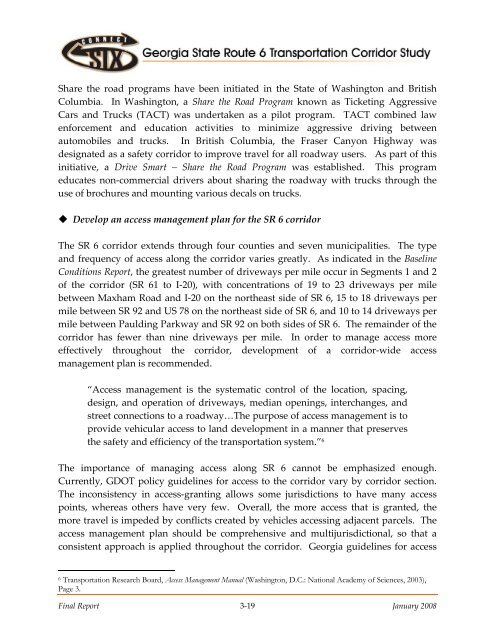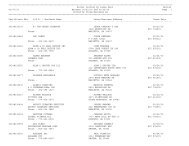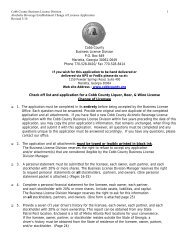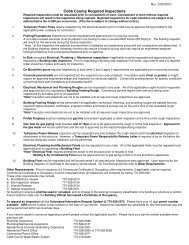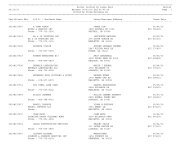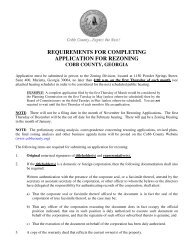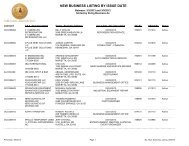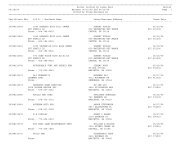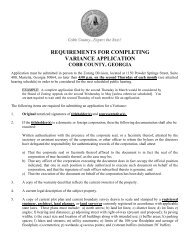State Route 6 Corridor Study Final Report - Cobb County Government
State Route 6 Corridor Study Final Report - Cobb County Government
State Route 6 Corridor Study Final Report - Cobb County Government
Create successful ePaper yourself
Turn your PDF publications into a flip-book with our unique Google optimized e-Paper software.
Share the road programs have been initiated in the <strong>State</strong> of Washington and British<br />
Columbia. In Washington, a Share the Road Program known as Ticketing Aggressive<br />
Cars and Trucks (TACT) was undertaken as a pilot program. TACT combined law<br />
enforcement and education activities to minimize aggressive driving between<br />
automobiles and trucks. In British Columbia, the Fraser Canyon Highway was<br />
designated as a safety corridor to improve travel for all roadway users. As part of this<br />
initiative, a Drive Smart – Share the Road Program was established. This program<br />
educates non‐commercial drivers about sharing the roadway with trucks through the<br />
use of brochures and mounting various decals on trucks.<br />
� Develop an access management plan for the SR 6 corridor<br />
The SR 6 corridor extends through four counties and seven municipalities. The type<br />
and frequency of access along the corridor varies greatly. As indicated in the Baseline<br />
Conditions <strong>Report</strong>, the greatest number of driveways per mile occur in Segments 1 and 2<br />
of the corridor (SR 61 to I‐20), with concentrations of 19 to 23 driveways per mile<br />
between Maxham Road and I‐20 on the northeast side of SR 6, 15 to 18 driveways per<br />
mile between SR 92 and US 78 on the northeast side of SR 6, and 10 to 14 driveways per<br />
mile between Paulding Parkway and SR 92 on both sides of SR 6. The remainder of the<br />
corridor has fewer than nine driveways per mile. In order to manage access more<br />
effectively throughout the corridor, development of a corridor‐wide access<br />
management plan is recommended.<br />
“Access management is the systematic control of the location, spacing,<br />
design, and operation of driveways, median openings, interchanges, and<br />
street connections to a roadway…The purpose of access management is to<br />
provide vehicular access to land development in a manner that preserves<br />
the safety and efficiency of the transportation system.” 6<br />
The importance of managing access along SR 6 cannot be emphasized enough.<br />
Currently, GDOT policy guidelines for access to the corridor vary by corridor section.<br />
The inconsistency in access‐granting allows some jurisdictions to have many access<br />
points, whereas others have very few. Overall, the more access that is granted, the<br />
more travel is impeded by conflicts created by vehicles accessing adjacent parcels. The<br />
access management plan should be comprehensive and multijurisdictional, so that a<br />
consistent approach is applied throughout the corridor. Georgia guidelines for access<br />
6 Transportation Research Board, Access Management Manual (Washington, D.C.: National Academy of Sciences, 2003),<br />
Page 3.<br />
<strong>Final</strong> <strong>Report</strong> 3‐19<br />
January 2008


